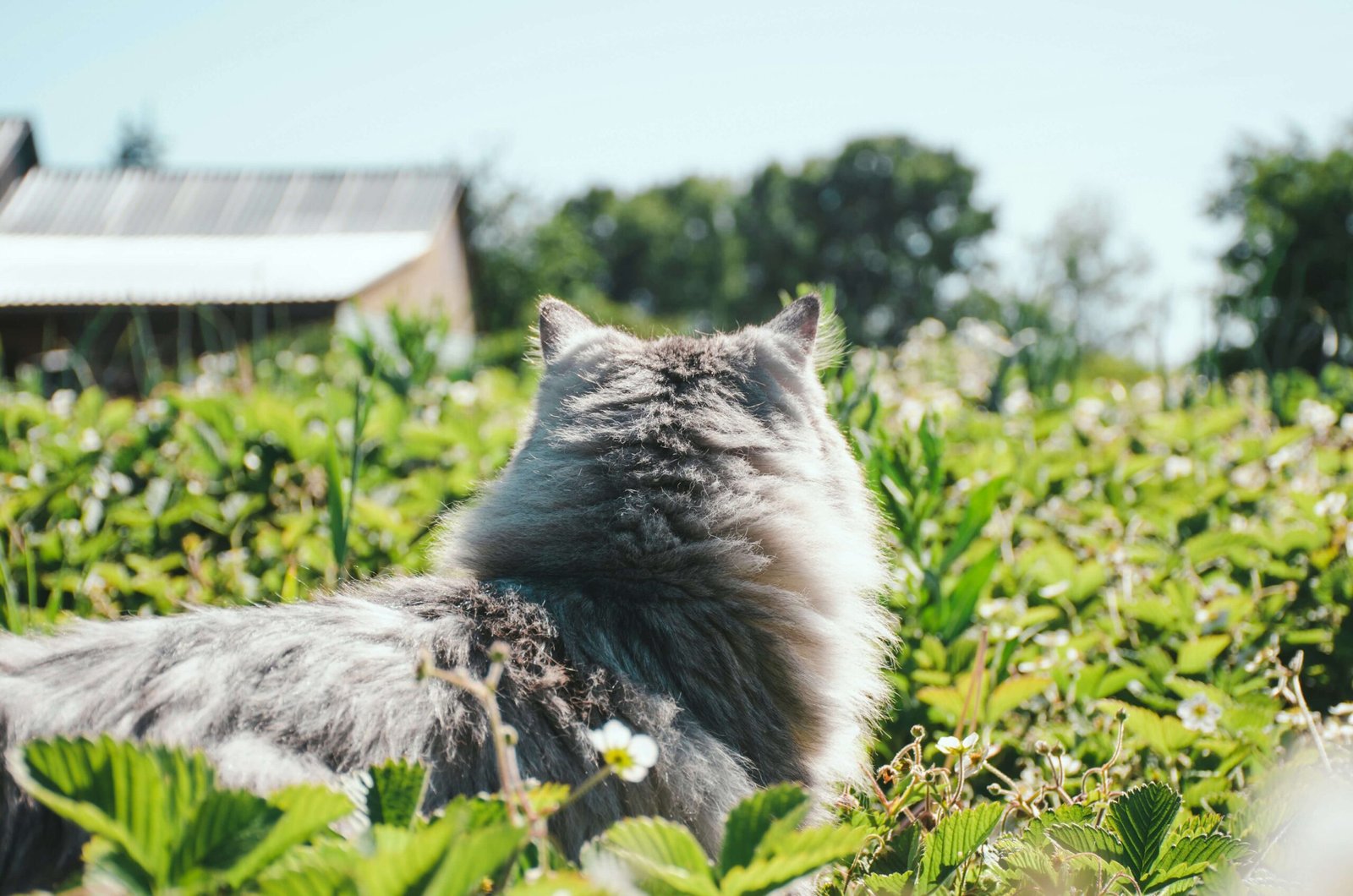Cat Leg Whiskers: The Secret Sensory Tool You Didn’t Know About
Whiskers are one of the most fascinating features of cats, but did you know that whiskers aren’t limited to their faces? Cats also have small, delicate whiskers on their legs, specifically on the backs of their front legs. These “leg whiskers” play a crucial role in helping your feline friend navigate their environment and interact with the world around them. While they may not be as prominent as facial whiskers, leg whiskers are just as important for a cat’s sensory perception. In this blog post, we’ll explore what cat leg whiskers are, why they matter, and how they contribute to your cat’s incredible agility and awareness. Let’s dive into the hidden world of these tiny but mighty sensory tools!
What Are Cat Leg Whiskers?
Cat leg whiskers are specialized hairs located on the back of their front legs, often referred to as carpal vibrissae. These whiskers are shorter and finer than facial whiskers but serve an equally vital purpose. Here’s what makes them unique:
Sensory Function
Like all whiskers, leg whiskers are highly sensitive tactile hairs connected to nerve endings that send signals to the brain.Location on the Legs
These whiskers are typically found on the back of the front legs, near the wrist area, also known as the carpal region.Fewer in Number
Unlike facial whiskers, which are more numerous, leg whiskers are fewer but still highly effective in their role.Rooted Deep in the Skin
Leg whiskers are embedded deeper in the skin than regular fur, allowing them to detect even the slightest touch or movement.Unique to Cats
While other animals may have similar sensory hairs, the placement and function of leg whiskers are specific to cats.
Understanding the anatomy and purpose of cat leg whiskers helps us appreciate their role in a cat’s daily life.
The Role of Leg Whiskers in a Cat’s Behavior
Leg whiskers may seem small, but they play a significant role in a cat’s behavior and interactions with their surroundings. Here’s how they contribute:
Hunting Assistance
When a cat captures prey, leg whiskers help them sense the exact position and movement of their catch, even when it’s out of sight.Environmental Awareness
These whiskers allow cats to detect changes in their immediate environment, such as brushing against objects or navigating tight spaces.Balance and Coordination
Leg whiskers provide additional sensory input that aids in maintaining balance, especially during jumps or landings.Grooming Precision
When grooming themselves, cats use their leg whiskers to detect dirt or tangles in hard-to-reach areas.Social Interactions
During play or cuddling, leg whiskers can help cats gauge the proximity and movements of other animals or humans.
The versatility of leg whiskers highlights their importance in a cat’s ability to thrive in diverse situations.
Check this guide 👉Do Cat Whiskers Grow Back? Best 7 Expert Tips!
Check this guide 👉Why Did My Cats Whisker Fall Out? Best 7 Health Tips!

Feature | Function |
|---|---|
Sensory Detection | Helps cats feel vibrations and movements |
Hunting Support | Assists in tracking and securing prey |
Environmental Navigation | Detects obstacles and changes in surroundings |
Balance and Coordination | Enhances stability during physical activities |
Grooming Aid | Guides precise cleaning of the body |
How to Care for Your Cat’s Leg Whiskers
While leg whiskers require minimal maintenance, it’s essential to ensure they remain healthy and intact. Here are some tips for caring for your cat’s leg whiskers:
Avoid Trimming
Never trim or cut your cat’s whiskers, as this can disorient them and impair their sensory abilities.Monitor for Damage
Check regularly for signs of breakage, inflammation, or irritation around the whisker area.Maintain Cleanliness
Gently wipe your cat’s legs with a damp cloth to remove dirt or debris that could affect their whiskers.Provide a Safe Environment
Ensure your home is free of sharp objects or rough surfaces that might harm your cat’s whiskers.Watch for Behavioral Changes
If your cat seems unusually clumsy or disoriented, it could indicate issues with their whiskers or sensory system.
By taking these steps, you can help preserve the functionality and health of your cat’s leg whiskers.
Signs of Issues with Leg Whiskers
While leg whiskers are generally low-maintenance, certain signs may indicate problems. Here’s what to look out for:
Excessive Licking or Chewing
If your cat obsessively licks or chews their legs, it could signal irritation or discomfort in the whisker area.Missing or Broken Whiskers
A sudden loss of whiskers may indicate trauma, stress, or nutritional deficiencies.Redness or Swelling
Inflammation around the leg whiskers could suggest an infection or allergic reaction.Changes in Behavior
Clumsiness, hesitation during jumps, or difficulty hunting may point to impaired sensory function.Unusual Grooming Habits
Over-grooming or neglecting certain areas could indicate issues with whisker sensitivity.
If you notice any of these signs, consult your veterinarian to rule out underlying health concerns.
How Leg Whiskers Enhance a Cat’s Hunting Skills
Leg whiskers are indispensable tools during a cat’s hunting process, providing sensory feedback that complements their other senses. Here’s how these whiskers contribute to their predatory prowess:
Detecting Prey Movements
Leg whiskers can sense even the slightest twitch or vibration from prey, helping cats pinpoint its exact location.Assessing Prey Size
These whiskers allow cats to gauge whether their prey fits into their grasp before attempting to capture it.Maintaining Grip
During a hunt, leg whiskers help cats adjust their grip on struggling prey, ensuring they don’t lose their catch.Navigating Low-Light Conditions
In dim environments, leg whiskers compensate for reduced visibility by providing tactile information about the surroundings.Enhancing Stealth
By relying on leg whiskers for sensory input, cats can remain silent and undetected while stalking their target.
The role of leg whiskers in hunting underscores their importance as a key component of a cat’s natural instincts and survival skills.
Environmental Factors That Affect Leg Whiskers
A cat’s environment can influence the health and functionality of their leg whiskers. Here’s how external factors may impact these sensitive hairs:
Exposure to Harsh Chemicals
Cleaning products or pesticides can irritate the skin around the whiskers, leading to discomfort or damage.Rough Surfaces
Constant contact with abrasive materials, like rough carpets or furniture, may wear down or break whiskers.Temperature Extremes
Extreme cold or heat can dry out the skin and follicles, potentially affecting whisker growth and sensitivity.Overcrowded Spaces
Tight or cluttered environments may cause frequent brushing against objects, increasing the risk of whisker fatigue.Hygiene Practices
Poor grooming habits, such as excessive bathing or using harsh shampoos, can harm the delicate structure of leg whiskers.
By creating a safe and comfortable environment, you can protect your cat’s leg whiskers and ensure they function optimally.
Fun Facts About Cat Leg Whiskers
Cat leg whiskers are fascinating not just for their functionality but also for the unique characteristics that make them stand out. Here are some intriguing facts about these tiny sensory tools:
Highly Sensitive Nerve Endings
Each leg whisker is connected to a dense network of nerve endings, making them incredibly responsive to touch.Unique Patterns
Like fingerprints, the arrangement and length of whiskers are unique to each cat, adding to their individuality.Evolutionary Adaptation
Leg whiskers have evolved over thousands of years to enhance a cat’s ability to survive in diverse environments.Role in Play Behavior
During play, leg whiskers help cats assess the movement and position of toys or other animals, mimicking real-life hunting scenarios.Connection to Emotional State
Changes in whisker position or sensitivity can sometimes reflect a cat’s stress or anxiety levels.
These fun facts highlight the remarkable complexity and adaptability of cat leg whiskers, showcasing just how incredible these small features truly are.
Frequently Asked Questions About Cat Leg Whiskers
Can I trim my cat’s leg whiskers?
No, trimming whiskers can disrupt your cat’s sensory abilities and cause confusion.
Do all cats have leg whiskers?
Yes, all cats have leg whiskers, though their prominence may vary between individuals.
Why do leg whiskers fall out?
Whiskers naturally shed and regrow, but excessive loss may indicate stress or health issues.
Are leg whiskers different from facial whiskers?
While both types serve sensory purposes, leg whiskers are shorter and located on the legs.
How can I protect my cat’s leg whiskers?
Provide a safe environment, avoid harsh chemicals, and monitor for signs of damage or irritation.
Appreciating the Small Wonders of Cat Leg Whiskers
Cat leg whiskers may be small, but they play a big role in your feline companion’s sensory world. From aiding in hunting to enhancing balance and coordination, these tiny hairs are a testament to the incredible design of cats. By understanding their purpose and taking steps to care for them, you can ensure your cat continues to thrive in their environment. Next time you watch your cat leap gracefully or groom meticulously, remember the unsung heroes—those little whiskers on their legs—are hard at work behind the scenes. Celebrate the marvels of nature by giving your cat the love and attention they deserve, whiskers and all!
Understanding Bone Supplement for Cats: Best 7 Expert Tips! – Safe, vet-approved guidance for strong feline bones & balanced nutrition.
Bone Supplement for Dogs: Best 7 Expert Tips! – Expert guide to calcium, collagen & bone health for every life stage.
Understanding Can Cats Get Sunburn: Best 7 Expert Tips! – Protect your feline from UV damage with vet-backed prevention strategies.
How to Train a Seizure Alert Dog: Best 7 Expert Tips! – Learn expert-backed steps to nurture natural instincts into reliable, life-saving seizure alerts.





